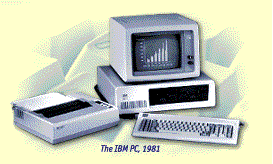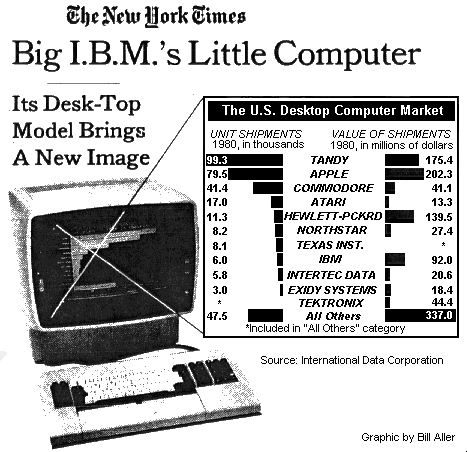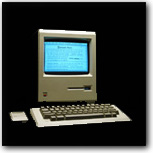
THE MICROCHIP
A Brief History of Computers
1970-1990
During the 1970s, the silicon microprocessor made of microchips, which consist of microscopic circuits small enough to fit through the eye of a needIe, were developed.

THE MICROCHIP
In March of 1976, Steven Wozniak and Steve Jobs finish work on a computer circuit board, the Apple I, to display at a Homebrew Computer Club meeting. The two found Apple Corp. the following month.

THE APPLE I COMPUTER
- APPLE I MOTHERBOARD
They are used in mini and microcomputers, which are smaller, faster, and less expensive. By 1977, microcomputers were being mass produced.

THE INTEGRATED CIRCUIT CHIP
IBM introduces its first personal computer, the IBM PC, in April of 1981.

THE
IBM PC
The computer quickly outsells market leaders Apple, Atari, Commodore, and Radio Shack to become the top-selling personal computer in the country. However, within a few years, IBM loses market share to manufacturers producing IBM clones.

In 1983, Microsoft introduces the Microsoft mouse for $200. Xerox and Apple have already released computers with graphical user interfaces, and Microsoft hopes to supply the necessarily hardware. However, the mouse takes several years to catch on.

THE MICROSOFT MOUSE
Time magazine names the personal computer Man of the Year in its January 1983 issue. At the time, Intel's 286 chip is the most powerful processor on the market, and the Macintosh has not yet been invented.

THE 1983 TIME MAN OF THE YEAR
The Macintosh computer is introduced to the world in what may be the most famous television commercial of all time. The commercial will air just once, during the 1984 Superbowl. The ad depicts an athletic woman flinging a mallet through a Big Brother-like screen.

THE MACINTOSH COMPUTER
Microsoft ships Windows 1.0 in 1985, nearly a year later than expected. The interface allows rudimentary pointing and clicking. Although several companies had raced to develop point-and-click interfaces, in the end, they cede the victory to Microsoft. However, Windows doesn't catch on widely until the introduction of Windows 3.1 in March 1992.

MICROSOFT WINDOWS
With the successful introduction of TCP/IP, which allows different computer networks to communicate with each other, ARPANET is becoming obsolete, and ARPA decides to decommission the network. By the summer of 1989, all of ARPANET's sites are transferred to the faster NSFNET, and ARPANET is turned off for good.

The state of ARPANET in October
1989